In a dusty workshop on the outskirts of the Ghanaian capital, Accra, coffin maker Eric Kpakpo stands surrounded by coffins shaped like shoes, animals, cars and types of food. Business is good, he says. Death is a constant.
His company, Erico Workshop Production, is part of a growing trend in this west African country of roughly 31 million people, which sees the dead buried in okadi adekai, or “fantasy coffins”, that represented their life.
A fisherman might be buried in a canoe or a fish. Professional drivers would have a car-shaped coffin; musicians a microphone; a kiosk owner might be buried in a sweet wrapper or an ice-cream; and a barman in a beer bottle. Kpakpo says he once made a womb-shaped coffin for a gynaecologist.
The first time Ghana’s coffin makers remember this kind of creation happening was for an old woman who had always wanted to go abroad. “Here it is very difficult to get money to travel,” says Kpakpo. “When she died, they had an aeroplane made.”
Another coffin maker agrees: “Some people make it something they wanted to do, like they haven’t sat on a plane before but say to their children, ‘Bury me on a plane when I die’. We get a lot of requests for planes.”
Kpakpo has had a few other requests that were aspirational, such as someone who was buried in a Porsche even though they never owned a car. Sometimes there are traditional symbols used, such as a lion for a local chief, or a Coca-Cola bottle for a person who woke up early. "I have to advise people on which is correct," says Kpakpo. "There can be family disputes over who chooses the type of coffin."
Carpentry tool
His work can also be restricted by the dimensions allowed in government cemeteries, while family plots mean he has more freedom.
Kpakpo imagines that he himself would be buried inside a coffin shaped like a carpentry tool. When asked whether the dead would not want to be remembered for more than their job, he responds: “In life everybody is proud of himself. Even the prostitutes are proud of their work. If you are not proud of it, why would you do it?”
Coffins are not the only aspect of a Ghanaian funeral service to have drawn international attention in recent years. In 2013 there were calls for Ghanaians to move to a four-day working week to give people more time to attend funerals.
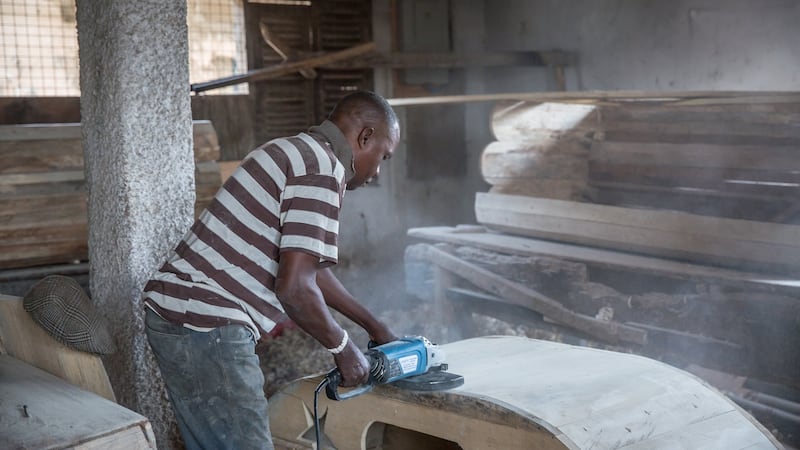
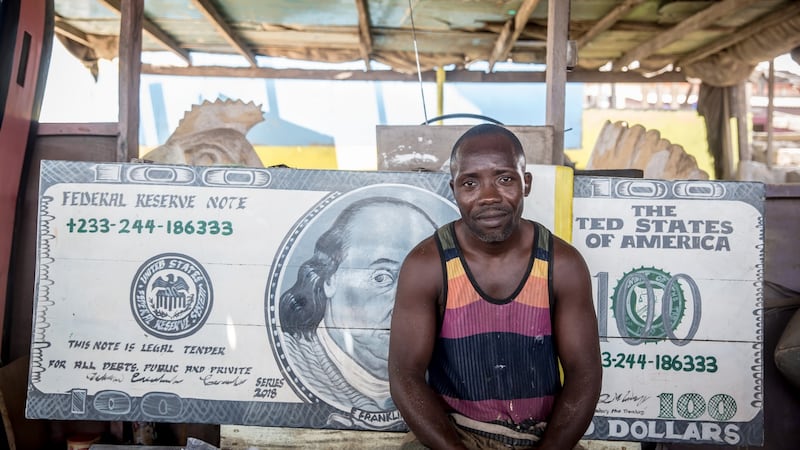
A group of dancing Ghanaian pallbearers went viral in 2020 for a video showing them exuberantly dancing at a funeral. Their moves included crawling on all fours with the coffin held up on their shoulders, high-fiving while supporting the coffin with their knees, and lying on their backs as if they are being squashed by it. Last month, the group – led by Benjamin Aidoo – reportedly sold the video as a non-fungible token for $1 million (€950,000), announcing that they would donate one quarter of the money to help Ukrainians.
“Most people love the display because they want to be happy,” Aidoo has said. “When you know the life that he or she spent before dying, I think it’s a great thing for you to celebrate.”
‘It’s art’
Kpakpo says he creates two types of coffins: lower-cost ones for burials, using soft wood; or sturdier, more expensive versions, which are exported or exhibited – though this aspect of the business has suffered since the coronavirus pandemic began. The cheapest come to at least 3,000 cedis (€377), while the export version is €1,400 on average, depending on the design. On display in his workshop is a $100-dollar note-shaped coffin – he says he created similar for exhibition at a local economic conference. “It’s art,” he says.
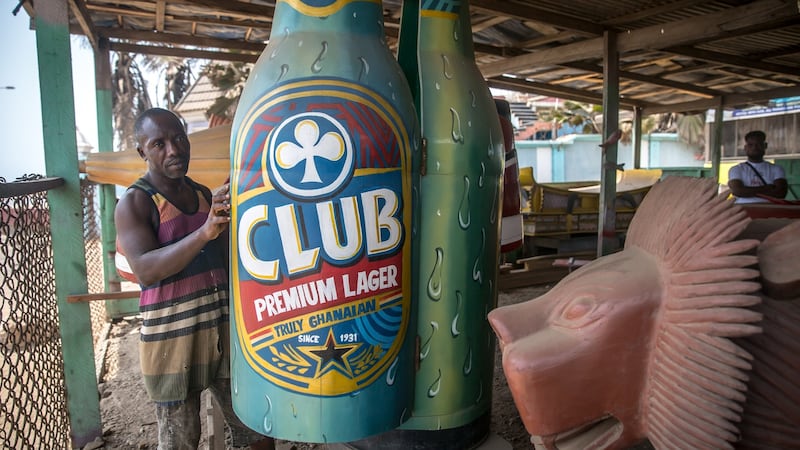
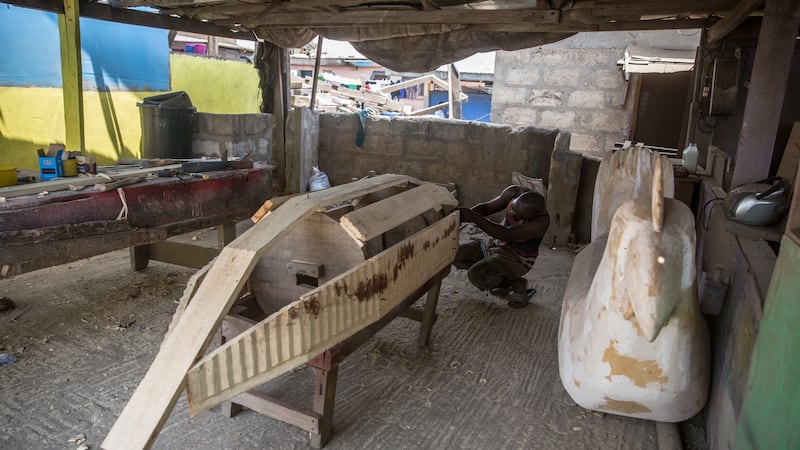
Kpakpo has been in this business for 20 years. "The most difficult is always something you haven't done before," he says, recalling the challenge of creating an octopus. Each coffin takes up to three weeks of work, and Kpakpo has two employees to help him. In Ghana, coffin makers say, a burial can take place up to a year after a death, meaning he has enough time to do his work while the body is held in a mortuary.
Daniel Obli Mensah (55) started working on coffins as a small boy at Ghana's Kane Kwei Carpentry Workshop, which was set up in the 1950s by Seth Kane Kwei, now deceased. Mensah was an apprentice until 1990 – it takes four years to learn everything, he says, and many people drop out because the work is so hard. These days, he runs his own workshop: Hello Design Coffin.
Ghana tradition
Chickens wander through the sawdust as he speaks. Behind him, an employee is painting a chilli pepper-shaped coffin – a design that costs up to 5,500 cedis (€691), depending on the wood used. Nearby is a car-shaped coffin. Upstairs are a truck, a fish and a camera. Mensah says he has buried teachers in pens, a mason in a trowel or level, a king in a royal stool, a cocoa farmer in a cocoa bean and a poultry farmer in a chicken.
“Someone created this and now it’s a Ghana tradition,” says Mensah. At a funeral, “sometimes people come from different places and haven’t witnessed this [type of coffin] before ... The friends and colleagues can get a surprise and understand the person better.”
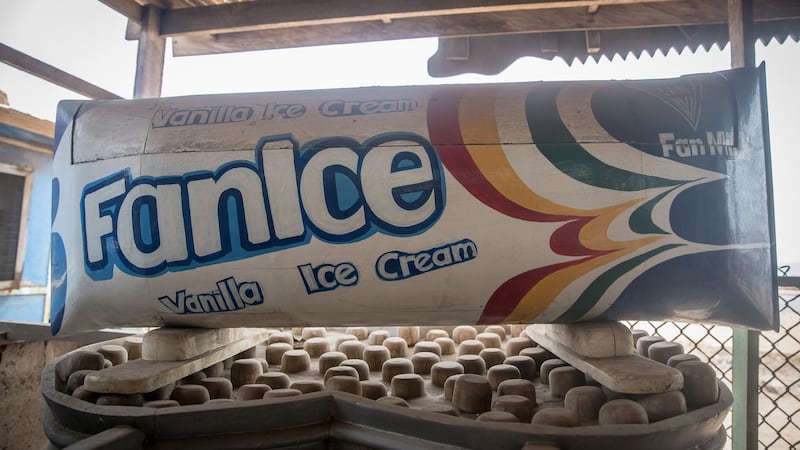
Ghanaian funerals are often publicly advertised, with a picture of the deceased and information on the event hung along public roads, meaning they attract huge numbers of attendees. Kpakpo says that his coffins offer a simple way to turn the funeral into a celebration of life, particularly when it comes to the death of an older person. “It makes people excited because if they’re in the coffin no one talks about the dead person, they talk about the design, so people don’t grieve as much. It changes the atmosphere. They talk about the coffin instead of the body.”










